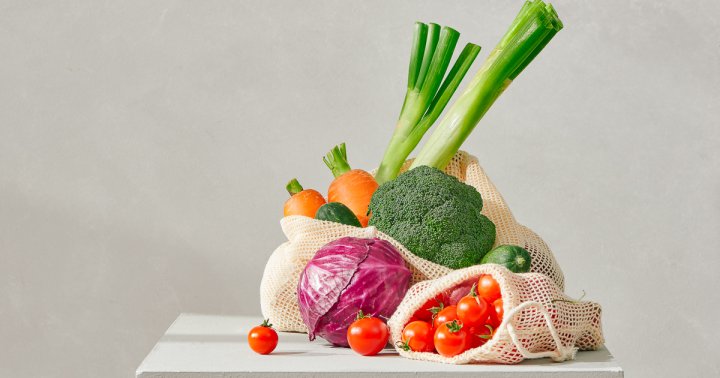This Herbal Tea Is An Anti-Inflammatory Powerhouse (Nope, Not Chamomile)
It’s tea time

Image by Ivona Zivulj / Stocksy July 20, 2023 Our editors have independently chosen the products listed on this page. If you purchase something mentioned in this article, we may Nothing soothes the mind and body quite like a cup of herbal tea. If you’re a tea enthusiast, you might be used to brewing a cup of chamomile or rooibos—but have you considered adding calendula to your rotation? Also called pot marigold, this tasty herbal tea has some potential health perks to boot. Here's what to know about the benefits of calendula tea, how to add it to your routine, and pro tips on how to brew it.
Advertisement
This ad is displayed using third party content and we do not control its accessibility features.
What is calendula tea?
Calendula tea comes from cheerful-looking yellow calendula flowers, named for the Latin word for “little clock,” probably because of their round shape. These flowers and their leaves provide the makings of a slightly bitter-tasting, yellow-hued beverage that packs potential for relieving menstrual cramps, reducing fevers, and more.
Though calendula tea has been used in folk medicine for centuries, it’s not as popular as some of its herbal tea cousins, and not all that common in mainstream stores. You may have to order calendula online or from specialty tea providers. If you do so, you can expect to pay about $1-3 per ounce.
Like most brewed teas, calendula isn’t a source of any macro- or micronutrients. But that doesn’t mean it doesn’t have health benefits! The tea leaves contain various antioxidants, including terpenes, flavonoids, polyphenols, and carotenoids. When released into water through steeping, these antioxidants don’t provide calories but do help reduce inflammation in the body1. Calendula tea is naturally caffeine-free, making it suitable to sip at any time.
Summary
Calendula tea is a naturally caffeine-free tea made from yellow calendula flowers. Its taste is earthy and slightly bitter. It's not as popular as other herbal teas like chamomile, but you should be able to find it in specialty tea shops.
Advertisement
This ad is displayed using third party content and we do not control its accessibility features.
Calendula tea benefits
Calendula’s medicinal uses are varied and stretch back into history. Here are a few traditional benefits of the tea—some of which are now just starting to be investigated by modern science.
1.
It could help reduce fevers (but we need more research to be sure)
"Calendula has been traditionally used to reduce fever,” says registered dietitian Wan Na Chun, MPH, RD, CPT. According to Chun, the plant’s flowers demonstrate both astringent and anti-inflammatory activity,2 which could be the reason folk medicine has long used them to bring down fevers. “However, there is limited scientific evidence to support this claim. More research is needed,” she says.
That said, many homeopathic practitioners use the tea as part of fever reduction treatment.
Advertisement
This ad is displayed using third party content and we do not control its accessibility features.
2.
It may have benefits for skin, but creams will be more effective
Calendula cream is a popular, inexpensive choice for moisturizing and hydrating skin—so you might wonder, does the tea work the same as the cream? “Calendula tea has several benefits for the skin,” says Chun. “[It] may promote wound and skin ulcer healing3, combat acne, and reduce radiodermatitis, which is skin damage caused by radiation.”
Still, for most skin issues, you’ll probably get better results from calendula cream than calendula tea. Research from 2022 found that preparations intended for external use (like lotions and creams) were effective for preserving skin firmness4, counteracting inflammation, and regenerating damaged tissue. Tea, on the other hand, had antiseptic properties but wasn’t noted for its ability to heal skin.
3.
It could have anti-cancer properties and be useful in cancer palliative care
Because of its antioxidants, calendula helps activate proteins that kill cancer cells5, according to a 2018 paper in Integrative Cancer Therapies. Another study compared the cancer-fighting properties of calendula tea and chamomile tea. Calendula came out on top6 for its antitumor potential. However, this research is preclinical, so we still have a lot to learn before we can definitively say that calendula has anti-cancer properties.
Where we do have more research is in the cancer palliative care space: In one randomized clinical trial, calendula extract combined with petroleum jelly helped prevent radiation-induced dermatitis7 in breast cancer patients receiving treatment. But again, patients applied calendula topically—they didn't sip it as tea.
Advertisement
This ad is displayed using third party content and we do not control its accessibility features.
4.
It could ease period pain and stimulate menstruation
It’s possible that calendula tea could help with pesky period pain. “Calendula has been traditionally used to relieve menstrual cramps and discomfort,” Chun says, though she points out that more research is necessary to fully understand the tea’s benefits for relieving period pain.
There’s another area where calendula could help with menstruation, too. A scientific literature review from 2021 reported that multiple studies found calendula effective for stimulating absent menstruation8. Separate research on a rat model found it to be effective for increasing ovulation with PCOS.9
If your periods have gone AWOL, talk to your doctor about what to do about it and whether calendula might be worth a try.
5.
It may inhibit the HIV virus
In a surprising food-as-medicine twist, calendula tea could be beneficial for HIV patients. But again, research is limited. Chun points to one older study10 (1997) that looked at the effects of calendula on people with the immunity-altering virus.
“This study used extracts of dried flowers from Calendula officinalis, which were examined for their ability to inhibit the human immunodeficiency virus type 1 (HIV-1) replication,” she explains. “The organic extract from Calendula officinalis flowers caused a significant dose- and time-dependent reduction of HIV-1 reverse transcription (RT) activity, suggesting that calendula could be a potential treatment for HIV."
Summary
Calendula tea has played a role in traditional medicine for centuries. Historically, it's been used to reduce fevers and relieve menstrual cramps. Some modern research has emerged to support its anti-inflammatory properties, but it's still in its infancy. We should take any potential benefits of the tea with a grain of salt.
Advertisement
This ad is displayed using third party content and we do not control its accessibility features.
How to add it to your routine
Since the scientific investigation is still somewhat spotty on calendula tea, it’s not yet totally clear how much of it you need to drink to experience any benefits. Still, sipping on tea daily certainly doesn't do any harm, and there are plenty of reasons to drink up—especially if you're using tea to replace processed, sugar-laden beverages.
To incorporate more calendula into your routine, eliminate the hassle of daily cup brewing in favor of one larger pot. “I like to recommend brewing it in large batches all at once and then storing it in the refrigerator for having later,” recommends herbalist Rachelle Robinett, RH, founder of Pharmakon Supernatural® and HRBLS.
You can also add it in some unexpected places in meals and snacks. “Tea is also great in place of water in smoothies, oatmeal, rice, or other recipes you might sneak it into,” Robinett says.
There’s not necessarily a best time to drink calendula, so if you find it soothing before bed, brew some in the nighttime hours. Or alternate it with your usual tea or coffee as a hot morning beverage.
Buying & storage tips
Calendula tea might be harder to come by (and a bit more expensive) than your average chamomile—so once you’ve secured a stash, you’ll want to take care of it well.
“Herbs are best stored in airtight containers away from light, temperature, and humidity changes,” Robinett says. Try keeping your leaves in an opaque jar in a cool pantry.
As for which type of tea to purchase, you can find calendula in tea bags or loose leaves. It’s up to you to decide which version you prefer, as well as what brand suits your price point.
Just be sure you select Calendula officinalis, not any other type of marigold leaves. “I always recommend that people pursue the highest quality herbs they have access to—the same approach we take to food,” Robinett says. “If organic is accessible, it’s worth it. If sustainably harvested, fair-trade is within your means, it’s worth it. Higher quality herbs are a better value, ultimately. Just do the best you can!”
RELATED READ: The Easiest Way To Tell If Your Tea Is Expired, From An Herbalist
How to brew calendula tea
It’s tea time! Robinett offers some pointers when it’s time to brew. “While calendula can be brewed the quick and common way (steeped for 5-7 minutes), like many herbs, it actually prefers a longer extraction process,” she says. Set aside some extra time for the process of decoction—aka a low-and-slow simmering. Here’s what to do:
Calendula tea side effects
Good news: calendula isn’t known for having many adverse side effects. It is possible, though, that this herb could cause an allergic reaction, especially in people with known allergies to marigolds or plants in the Asteraceae family. It might also interfere with certain medications, like sedatives, blood pressure meds, or medications for diabetes. If you're concerned, check with your doctor about potential contraindications before plunking down your cash on calendula.
Frequently Asked Questions
Can I drink calendula tea daily?
Yep! The FDA considers calendula tea safe for general use, and Robinett says there’s no bad time to drink it. “Calendula is great any time of day.”
Does calendula make you sleepy?
While some have reported feeling sleepy after drinking calendula tea, Robinett says that’s not something to expect. “Calendula is not a sedative herb,” she says—though she does point out that, because of its anti-spasmodic effects, your muscles may feel more relaxed after drinking it.
Who shouldn’t use calendula?
If you know you have an allergy to marigolds, you’ll probably want to steer clear of calendula tea. And, though there’s not much research on how the tea affects pregnant women, it might be best to skip it if you’re pregnant or trying to conceive. Some data indicates that it could interfere with conception or stimulate labor.
The takeaway
Who knew such pretty flowers could make such a multi-purpose tea? Whether you’re tired of your usual cup of black or green tea, calendula can be a great way to switch things up in your beverage routine. Here are a few other delicate herbal teas to explore.
Want to turn your passion for wellbeing into a fulfilling career? Become a Certified Health Coach! Learn more here.

 KickT
KickT 

































